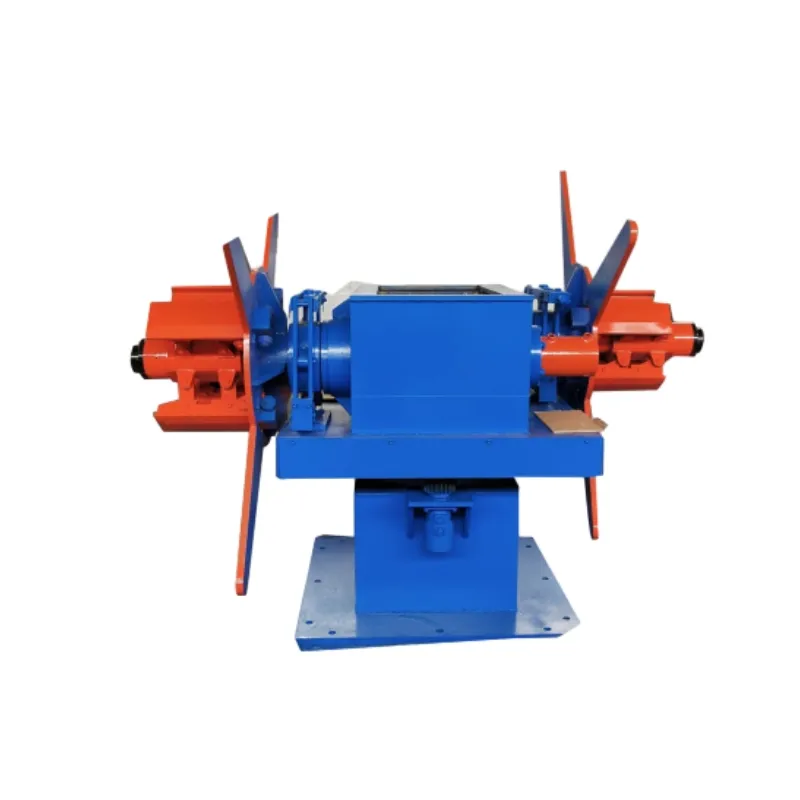pipe straightener machine
Understanding Pipe Straightener Machines An Essential Tool in Metal Fabrication
In the world of metal fabrication, precision and accuracy are paramount. One of the key tools that facilitate these qualities in the processing of metal pipes is the pipe straightener machine. These machines play a crucial role in ensuring that pipelines and tubes are perfectly aligned and devoid of any bends or imperfections that could affect their functionality in various applications. This article will explore the significance, operational principles, and advantages of pipe straightener machines in the fabrication industry.
What is a Pipe Straightener Machine?
A pipe straightener machine is designed to correct the bends and deformities in metal pipes and tubes. Typically utilized in industries such as construction, oil and gas, and manufacturing, these machines are essential for producing high-quality metal components. They come in various configurations, including manual and automatic systems, which can accommodate different pipe sizes and materials, ensuring versatility across applications.
Operational Principles
The working mechanism of a pipe straightener machine is relatively straightforward yet effective. The process begins with the placement of a bent pipe into the machine. As the pipe enters, it is subjected to a combination of pressure and mechanical force. This force is applied strategically in specific directions, effectively repositioning the metal to achieve the desired straightness.
Most pipe straighteners employ rollers or bending devices that gradually reshape the pipe as it passes through. The number of rollers and their alignment can vary based on the machine design and the specific requirements of the pipe being straightened. Advanced models even come equipped with automated controls that allow operators to input specific measurements, ensuring consistent results.
The materials that can be processed by these machines typically range from mild steel to stainless steel and aluminum. Given the varying thickness and tensile strength of these materials, many pipe straightener machines are designed with adjustable settings to handle different pipe specifications safely and efficiently.
pipe straightener machine

Applications and Industries
The applications of pipe straightening machines span numerous industries. In the oil and gas sector, straightened pipes are essential for constructing pipelines that transport crude oil, natural gas, and refined products. In the construction industry, straightened steel pipes are used for structural supports and frameworks, where any imperfections can significantly impact stability and safety.
Additionally, manufacturers of appliances and machinery utilize straightened tubes in various components, ensuring that the materials fit seamlessly together. Furthermore, automotive industries require straightened metal pipes for exhaust systems, fuel lines, and structural elements to ensure that vehicles meet safety standards and function optimally.
Advantages of Using Pipe Straightener Machines
Investing in a pipe straightener machine offers several advantages that contribute to operational efficiency and product quality. Firstly, these machines save time and labor costs by automating a process that would otherwise require significant manual effort. The precision achieved through machine straightening also leads to a reduction in material waste, as fewer pipes may need to be discarded due to defects.
Moreover, the consistent straightening capability results in higher-quality products, enhancing the reputation of manufacturers who prioritize excellence. Additionally, the ability to process various sizes and types of pipes means that a single machine can serve multiple purposes, making it a cost-effective investment for businesses.
Conclusion
In conclusion, pipe straightener machines are indispensable tools in the modern fabrication arena, enabling industries to produce high-quality, defect-free metal pipes and tubes. Their ability to correct bends and imperfections swiftly enhances productivity, reduces material waste, and ensures that finished products meet stringent quality standards. As technology advances, these machines are likely to become even more sophisticated, further revolutionizing the way metal fabrication is approached across various sectors. Whether for large-scale industrial applications or specialized custom projects, pipe straightening machines are a vital component of efficient and effective metalworking.
-
High Frequency Straight Seam Welded Pipe Production Line|BzZhou Xinghua|Precision Welding&EfficiencyNewsJul.30,2025
-
High Frequency Straight Seam Welded Pipe Production Line - BzZhou Xinghua|Precision Engineering&EfficiencyNewsJul.30,2025
-
High-Frequency Straight Seam Welded Pipe Production Line-BzZhou Xinghua Machinery Equipment Manufacturing Co., LTD.NewsJul.30,2025
-
High-Frequency Straight Seam Welded Pipe Production Line-BzZhou Xinghua Machinery Equipment Manufacturing Co., LTD.|Precision Manufacturing, High EfficiencyNewsJul.30,2025
-
High Frequency Straight Seam Welded Pipe Production Line-BzZhou Xinghua Machinery Equipment Manufacturing Co., LTD.|Precision Steel Pipe Manufacturing&Industrial EfficiencyNewsJul.29,2025
-
High-Frequency Straight Seam Welded Pipe Production Line-BzZhou Xinghua Machinery Equipment Manufacturing Co., LTD.|Precision Steel Pipe Manufacturing&Industrial EfficiencyNewsJul.29,2025


